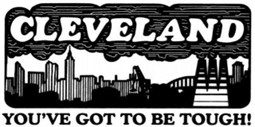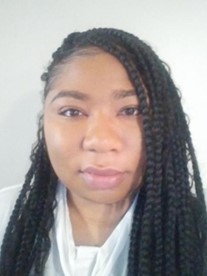Cleveland has had its struggles, but no one is giving up on the city and its residents. In fact, multiple community activist organizations, working on separate issues, have united as Cleveland Lead Advocates for Safe Housing, or CLASH, to maximize their voices on an important public health and safety issue: the city’s high rates of lead poisoning. For example, Black on Black Crime, which aims to reduce violence in Cleveland’s Black community, sees a direct relationship between lead poisoning and crime. And the Cuyahoga County Progressive Caucus has built lead issues into their endorsement and education processes.
CLASH’s team of volunteer activists succeeded in getting the 2019 Lead Safe Certificate Law passed, which requires residential rentals built before 1978 to obtain a Lead Safe Certificate. Now, CLASH has set its sights on ensuring full implementation of that law.
We caught up with Erika Jarvis and Spencer Wells, two CLASH volunteers, to talk about their vision for a safer Cleveland and the Thriving Earth project that is getting underway now.
How would you describe Cleveland to someone who has never been there?
EJ: I’ve been in Cleveland all my life, and the people here are really great. But it’s almost like living in two cities, because depending on where you live, there can be high poverty and crime, but other places don’t have that experience.
I was actually lead poisoned as a child, and I found out about CLASH when I heard someone share a story about their child, who died from it. I had never heard anyone share a story like that. I came to one of their events, introduced myself, and shared my story, and that’s how I got involved. I thought it was important for people to see that there was a generation of children who were poisoned by lead.
SW: A friend of mine said, “Cleveland is a playground for the rich.” We’ve got a basketball team, a football team, and a world-renowned symphony and art museum, but these are tax-exempt organizations that aren’t paying anything into the city, and their patrons are all from the outer ring suburbs. Our childhood poverty rate is about 46%, which means that there is every variety of poverty-related affliction that you could imagine, without a lot of prospects.
What unique strengths do Cleveland residents have?
SW: It’s a real activist community. The last 10 years or so, there has been a surge in citizen-based activism, and it cuts across racial, generational and economic lines. CLASH is one of the reasons for that – our successes benefit other groups – but also is a beneficiary, building off of their energy.
EJ: The Clevelanders I know, if something is happening, they want to get involved, and they want answers. Overall, I would say that Clevelanders are very passionate and resilient – especially about our sports. When the Cavs won the championship, my father was in tears. That was one time where I saw the city really come together, Black, white, poor – that was a good connector.
What challenges are they facing?
EJ: We have a huge digital divide. In low-income neighborhoods, there are no fiber optics, and providers cap internet speeds. Depending on where you live, you just want to throw your computer out the window. During the pandemic, Cleveland tried to do the best they could, giving out laptops and hotspots, but a lot of these parents aren’t computer literate and might not have the electricity to run a computer.
SW: Our focus has been on lead in rental housing. The city currently estimates that 80-90% of about 100,000 rental units have lead in them. The 2019 ordinance went into effect in March 2021, and there are 60,000 units on the rental registry, but so far, only 8,000 have been certified lead-safe. We have a long way to go, despite the financial incentives set up to do it.
What do you think people would be surprised to learn about Cleveland?
EJ: People will come together, no matter what they look like or their ideology. CLASH is like a rainbow coalition, and it just shows that all these different people can have common ground, that we all want lead poisoning to stop. CLASH is very diverse. We’re all volunteers with other jobs, but we’re centered around lead because it’s a multi-faceted issue. It’s not just kids eating paint chips, we’re talking about lead pipes, water, and barriers to testing. We just found out a few days ago that the machines that analyze the testing strips were recalled, which means we have to go back and test those kids again.
SW: The thing that you don’t know about Cleveland is that the sun never shines between Christmas and Valentine’s Day. People get real depressed, and it can feel like life keeps making storm clouds over us. There used to be a t-shirt that said, “Cleveland: You’ve got to be tough.”

Gentrification is not a large issue here. There are a couple of communities, like Tremont, that are gentrifying, raising worries about displacement. But at the same time there is still a lot of obsolete housing that is being demolished and turned into vacant lots. Every year we lose people. We went from 500,000 [residents] in the early 1970s to currently 350,000. Most young people leave.
What advice would you give other groups seeking to solve a large community problem?
SW: One of the things that I think is a barrier to this work is getting funding. Funding is the kiss of death. As soon as you’re funded, then you’re under the control of the people in charge. The philanthropic community portrays themselves as grassroots activists, but they have lost any contact they have had with ordinary folks. The key is really getting people engaged in their own changes, and that’s really difficult, because we’ve got to continuously be out in the streets and in neighborhood meetings, talking to people about their issues. That’s probably 90% of what we do.
EJ: Be consistent. I have been so frustrated with some of the political officials, even representatives of lead hotspots, who have no idea, or if they do they aren’t doing anything about it. It’s not easy, and I’m sure some people wanted to give up, but you have to remain consistent and keep putting that issue in front of officials because there are people depending on you.
Outreach is important, too. People need to understand what is going on. Grace, too, because there are going to be some bumps along the way, especially with those who have an opposing opinion, like landlords. Unfortunately, people don’t voluntarily follow rules. To date there has been no single housing court case won over lead. That shows you it’s not taken seriously. We need good messaging and communication to say, “This is important to you, too. You want to make sure your tenants are safe, and not getting sick.”
What are the priorities to ensure Cleveland is a great place to live 20 years from now?
SW: The state of the local economy. Cleveland was built on industrial jobs that don’t require a lot of education but pay a good salary, enough to keep you out of poverty. Those are all gone. Our own CLASH volunteers and leaders are working for DoorDash or minimum wage for their livelihoods.
EJ: A great Cleveland would look equitable. No matter where you live, everybody has the same internet speed, the same opportunities for good education, and the same opportunities for people just to be able to live however they want to.

Erika Jarvis

Spencer Wells
